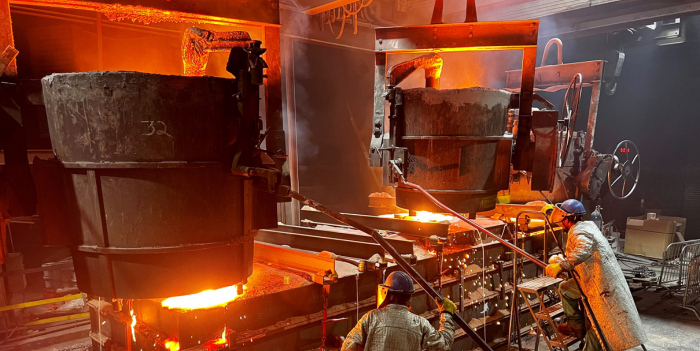
What Do the Last Two Recessions Suggest for Middle-Market M&A for the Foreseeable Future?
No two recessions are alike and no two economic environments are directly comparable. However, there are certain patterns in the capital markets that tend to repeat over the years. These patterns offer great insight into potential outcomes for the coming months and years with respect to middle-market M&A. By most accounts, the U.S. entered a recession during the first quarter of 2020. Prior to this quarter, middle-market M&A activity and multiples were quite robust. While the current economic decline resulted from a direct external shock caused by the COVID-19 pandemic, there are varying opinions as to how this impacts the economy and M&A going forward. A closer look at the 2001 recession as well as the great recession which began in December 2007 and lasted into 2009, reveals some consistent patterns which provides potential guidance.
What Might This Mean for Middle-Market M&A in Today’s Environment
Based only on extrapolating data from the last two recessions and applying this data to today’s market, would offer these predictions for middle-market M&A:
- Data suggests that middle-market M&A volume declined after the start of the recession. The low point was hit within five to six quarters once the recession started. This data implies that we will hit the low point in middle-market M&A during the 2nd or 3rd quarter of 2021.
- The number of transactions in middle-market M&A could drop of 50 to 60 percent from the pre-recession high quarter to the low quarter.
- We would also expect the value of the middle-market M&A transactions to drop in the range of 55 to 70 percent from its pre-recession high quarter to the low point quarter.
- Annual value (vs quarterly) will not show as significant of a drop and be down 45 to 55 percent.
- The data suggests that 2021 will be the worst calendar year for middle-market M&A for the foreseeable future.
- Once we bottom out in 2021, we will see a five-year run up in middle market M&A peaking in 2026.
- The increase in M&A volume from the low point in 2021 to the high point in 2026 will reflect an overall growth rate of 68 to 79 percent increase.
The detail on the prior two recessions are below.
The Recession of 2001
Overview
This recession started in March of 2001 and lasted through November 2001. During the recession, the U.S. and the economy experienced an additional negative jolt with the events of 9/11. As a result of 9/11, and other events, the U.S. experienced a time where travel fell dramatically, fear gripped the country and the uncertainty of the situation crippled many parts of the economy. For the months and years following 9/11, the lives and the way of life for many Americans were permanently altered. This recession followed a long stretch of strong economic performance in the late 1990’s. The public and private markets were experiencing tremendous upward growth in valuations and M&A activity.
Impact on Middle-Market M&A
The Decline: Middle-market M&A quarterly volume peaked during the first quarter of 2000. Annual volume also peaked in 2000. The recession drove M&A activity downward until bottoming out in 2002, two years after the peak. From the beginning of the recession, the volume of M&A activity consistently declined. Even though the recession ended in November of 2001, the M&A activity continued to decline and bottomed out six quarters after the start of the recession during the third quarter of 2002. Annual volumes dropped 36.5 percent from their highs in 2000 to their lows in 2002. During that same time-period, the value of M&A deals dropped 44.3 percent, reflecting a sharper drop in value of deals during this timeframe. If measured on a quarterly basis, the drop is even more significant. From first quarter of 2000 high in volume to the third quarter bottom, the decline was over 50 percent. During these same quarters, the value of M&A deals declined approximately 54 percent.
The Subsequent Ascent of M&A: The middle-market M&A activity bottomed during 2002. From there, the M&A deal activity started a five-year run upward gaining approximately 68 percent during that five-year span and peaking in 2007. The 2007 peak year occurred seven years after the pre-recession peak year in 2000.
The Great Recession
Overview
This recession started in December 2007 and lasted through June 2009. It was the longest recorded recession since the great depression. This recession was significant and startling, based on the impact to the financial system in the U.S. The recession was ultimately caused by the aggressive mortgage lending policies with little or no oversight, banks and other financial institutions taking on too much risk, and the aggressive borrowing by consumers and corporations. Many of the major banks in the U.S. and across the globe were saddled with a large percentage of toxic loans and securities. It took aggressive and ongoing government and central bank involvement to avoid a complete collapse. The impact on economic activity was significant and long lasting. While the growth in the 1990s was fueled by the rapid ascent in technology, the growth prior to the Great Recession was augmented by the real estate boom in housing resulting from the aggressive mortgage market.
Impact on Middle-Market M&A
The Decline: Middle-market M&A quarterly volume peaked during the fourth quarter of 2007 while annual volume for M&A also peaked in 2007. The recession drove M&A activity downward until bottoming out in 2009, two years after the peak and over a year after the recession began. From the beginning of the recession during the fourth quarter of 2007, the volume of M&A activity consistently declined. M&A activity continued to decline throughout 2008 and bottomed out five quarters after the start of the recession during the first quarter of 2009. Annual volumes dropped 47 percent from their highs in 2007 to their lows in 2009. During that same time-period, the value of M&A deals dropped 53 percent, reflecting a sharper drop in value of deals during this timeframe. If measured on a quarterly basis, the drop is even more significant. From fourth quarter of 2007 high in volume to the first quarter of 2009 bottom, deal volume dropped 61 percent. During these same quarters, the value of M&A deals declined approximately 71 percent.
The Subsequent Ascent of M&A: The middle-market M&A activity bottomed during 2009. From there, the M&A deal activity started a five-year run upward gaining approximately 79 percent during that five-year span and peaking in 2014. As in the prior recession, there was also a seven-year span from the pre-recession year to the subsequent post-recession peak in middle-market M&A.
Related Professionals
Get in Touch
Tell us a little about yourself and we will get in touch as soon as we can.

 Back to news articles
Back to news articles




